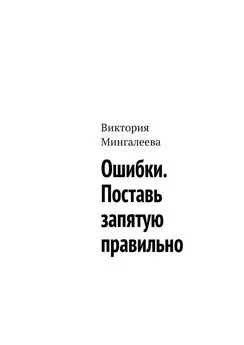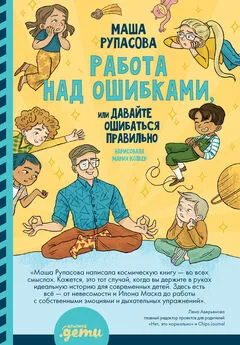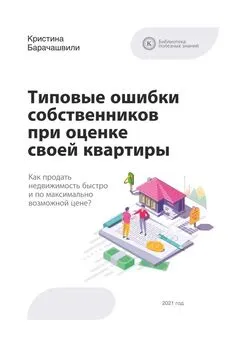Ив Жангра - Ошибки в оценке науки, или как правильно использовать библиометрию
- Название:Ошибки в оценке науки, или как правильно использовать библиометрию
- Автор:
- Жанр:
- Издательство:ООО «ЛитРес», www.litres.ru
- Год:2018
- ISBN:нет данных
- Рейтинг:
- Избранное:Добавить в избранное
-
Отзывы:
-
Ваша оценка:
Ив Жангра - Ошибки в оценке науки, или как правильно использовать библиометрию краткое содержание
Ошибки в оценке науки, или как правильно использовать библиометрию - читать онлайн бесплатно полную версию (весь текст целиком)
Интервал:
Закладка:
152
152См. прекрасный образец критики в: Malcolm Gladwell, “The order of things. What college rankings really tell us,” in The New Yorker , 14–21 February, 2011, pp. 68–75. См. более подробно о Шанхайском рейтинге в: Yves Gingras, “Le classement de Shanghai n’est pas scientifique,” in La Recherche , 430, May, 2009, pp. 46–50.
153
153Eleanor S. Abaya, “Promotion et notoriété sont devenues une nécessité pour les universités d’aujourd’hui,” Affaires universitaires , 5 août 2008, доступно по адресу: http://www.affairesuniversitaires.ca/promotion-et-notoriete-sont-devenues-une-necessite-pour-les-universites-daujourdhui.aspx.
154
154См.: Martin Van Der Werf, “Clemson assails allegations that it manipulates ‘U. S. News’ rankings,” in Chronicle of Higher Education, 4 June, 2009, доступно по адресу: http://chronicle.com/article/Clemson — Assails — Allegations/47295/.
155
155 The Ottawa Citizen , 23 April 2006. Maclean’s — канадский иллюстрированный журнал, в котором ежегодно публикуются рейтинги канадских университетов.
156
156D. D. Guttenplan, “Questionable science behind academic rankings,” in New York Times , 15 November, 2010, доступно по адресу: http://www.nytimes.com/2010/11/15/education/15iht-educLede15.html?pagewanted=all&_r=0.
157
157http://www.topuniversities.com/node/4414/ranking-details/world-niversity-rankings/2012.
158
158См.: Martin Enserink, “Who ranks the university rankers?” in Science , 317, 24 August, 2007, pp. 1026–1028.
159
159Mathilde Munos, “Classement de Shanghai des universités: ‘La France grignote des places’ (Fioraso),” in France Info , 15 August, 2013; http://www.franceinfo.fr/education-jeunesse/les-invites-de-france-info/classement-de-shanghai-des-universites-la-france-grignote-des-places-fiora.
160
160Категория «высокоцитируемые исследователи» ( highly cited researchers ) была введена для обозначения 1 % наиболее часто цитирующихся статей, учитываемых в индексах научного цитирования (рассчитывается за определенный период для различных областей науки).
161
161Yudhijit Bhattacharjee, “Saudi Universities Offer Cash in Exchange for Academic Prestige,” Science 334, December 9, 2011, pp. 1344–1345. См. также многочисленные реакции в: Science 335, March 2, 2012, pp. 1040–1042 и на их сайте, http://comments.sciencemag.org/content/10.1126/science.334.6061.1344, дата доступа: 15 декабря 2015 г.
162
162Здесь я ссылаюсь на публикацию Thomson Reuters “2014 HCR as of September 8, 2015,” см.: http://highlycited.com, дата доступа: 21 декабря 2015 г.
163
163Étienne Gless, “Ipag: Les secrets d’une progression ‘fulgurante’ en recherche,” L’Etudiant.fr, October 9, 2014, http://www.letudiant.fr/educpros/enquetes/ipag-les-secrets-d-une-progression-fulgurante-en-recherche.html.
164
164EFMDP Quality Improvement System, EQUIS Standards and Criteria , January 2014, p. 64, https://www.efmd.org/images/stories/efmd/EQUIS/2014/EQUIS_Standards_and_Criteria.pdf.
165
165См.: Sébastien Mosbah-Natanson, Yves Gingras, “The globalization of social sciences? Evidence from a quantitative analysis of 30 years of production, collaboration and citations in the social sciences (1980–2009),” in Current Sociology , 62 (5), 2014, pp. 626–646.
166
166William Bruneau, Donald C. Savage, Counting Out the Scholars: How Performance Indicators Undermine Universities and Colleges (Toronto: James Lorimer, 2002).
167
167Stanford G. Thatcher, “The Crisis in Scholarly Communication,” in Chronicle of Higher Education, 1995, March 3, B1–B2; Carol Tenopir, Donald W. King, “Trends in Scientific Scholarly Journal Publishing in the United States,” in Journal of Scholarly Publishing , 1997, 28 (3), pp. 135–170; Glenn S. McGuigan, Robert D. Russel, “The business of academic publishing: A strategic analysis of the academic journal publishing industry and its impact on the future of scholarly publishing,” in Electronic Journal of Academic and Special Librarianship , 9 (3), http://southernlibrarianship.icaap.org/content/v09n03/mcguigan_g01.html; Vincent Larivière, Stefanie Haustein, and Philippe Mongeon, “The Oligopoly of Academic Publishers in the Digital Era,” in PLoS ONE , 2015, 10 (6), e0127502.
168
168Mikael Laakso, Patrik Welling, Helena Bukvova, Linus Nyma, Bo-Christer Björk, and Turid Hedlund, “The Development of Open Access Journal Publishing from 1993 to 2009,” in PLoS ONE , 2011, 6 (6), e20961. doi:10.1371/journal.pone.0020961.
169
169Zoe Corbyn, “Retractions up tenfold,” in Times Higher Education , 2009, (20 August), https://www.timeshighereducation.com/news/retractions-up-tenfold/407838.article; Richard van Noorden, “Brazilian citation scheme outed. Thomson Reuters suspends journals from its rankings for ‘citation stacking.’” in Nature , 2013, 500 (29 August), pp. 510–551; Charlotte J.Haug, “Peer-Review Fraud — Hacking the Scientific Publication Process,” in New England Journal of Medicine , 2015, 373 (17 December), pp. 2393–2395; Jeffrey Beal, “Predatory journals: Ban predators from the scientific record,” in Nature, 534 (16 June).
170
170T. D. Wilson, “The Nonsense of ‘Knowledge Management’,” in Information Research , 2002, 8 (1), http://InformationR.net/ir/8-1/paper144.html; Michael Power, “The Audit Society — Second Thoughts,” in International Journal of Auditing , 2000, 4 (1), pp. 111–119.
171
171Jonathan R. Cole, Steven Cole, Social Stratification of Science (Chicago: University of Chicago Press, 1973).
172
172Pierre Bourdieu, “Forms of Capital,” in J. E. Richardson (ed.), Handbook of Theory of Research for the Sociology of Education (New York: Greenwood Press, 1986), pp. 241–258; Pierre Bourdieu, Science of Science and Reflexivity (Chicago: University of Chicago Press, 2004).
173
173Bruno Latour, Steven Woolgar, “The Cycle of Credibility,” in Barry Barnes and David Edge (eds), Science in Context. Readings in the Sociology of Science (Cambridge, Mass.: MIT Press, 1982), pp. 34–43.
174
174Harriet Zuckerman, Robert K. Merton, “Patterns of Evaluation in Science: Institutionalization, Structure, and Functions of the Referee System,” in Minerva, 1971, 9, pp. 66–100; Daryl E. Chubin, Edward J. Hackett, Peerless Science. Peer Review and US Science Policy (Albany: SUNY Press, 1990); Mario Biagioli, “From Book Censorship to Academic Peer Review,” in Emergences, 2002, 12 (1), pp. 11–45; David Abraham Kronick, “Devant le deluge” and Other Essays on Early Modern Scientific Communication (Lanham, MD: Scarecrow, 2004); Lewis Pyenson, “Physical Sense in Relativity: Max Planck edits the Annalen der Physik, 1906–1918,” in Annalen der Physik , 2008, 17 (2–3), pp. 176–189.
175
175Thane Gustafson, “The Controversy Over Peer Review,” in Science , 1975, 190 (12 December), pp. 1060–1066.
176
176Drummond Rennie, “Let’s make peer review scientific,” in Nature , 2016, 535 (7 July), pp. 31–33.
177
177См.: Yves Gingras, Bibliometrics and Research Evaluation. Uses and Abuses (Cambridge, Mass.: MIT Press, 2016).
178
178Isabelle Bruno, Emmanuel Didier, Benchmarking: L’État sous pression statistique (Paris: La Découverte, 2013).
179
179Nicholas Wade, “Citation Analysis: A New Tool for Science Administrators,” in Science , 1975, 4187, pp. 429–432.
180
180Wendy Nelson Espeland, Michael Sauder, Engines of Anxiety: Academic Rankings, Reputation, and Accountability (New York: Russell Sage Foundation, 2016).
181
181Jeanne Peiffer, Jean-Pierre Vittu, “Les journaux savants, formes de la communication et agents de la construction des savoirs (17e–18e siècles),” in Dix-huitème siècle , 2008, 40, pp. 281–300.
182
182Bob Grant, “Merck Published Fake Journal,” in TheScientist.com , 2009 (April 30), http://www.the-scientist.com/blog/display/55671/; Bob Grant, “Elsevier Published 6 Fake Journals,” in TheScientist.com , 2009 (May 7), http://www.the-scientist.com/blog/display/55679/; Jeffrey Beal, “Predatory journals: Ban predators from the scientific record,” in Nature , 2016, 534 (16 June).
183
183Robert K. Merton, “The Matthew Effect in Science, II. Cumulative Advantage and the Symbolism of Intellectual property,” in Isis, 1988, 79, pp. 606–623; Katherine W. McCain, “Obliteration by Incorporation,” in Blaise Cronin and Cassidy R. Sugimoto (eds), Beyond Bibliometrics (Cambridge, Mass.: MIT Press, 2014), pp. 129–149.
184
184Ichiko Fuyuno, David Cyranoski, “Cash for Papers: Putting a Premium on Publication,” in Nature , 2006, 441 (June 15), p. 792.
185
185Fred Barbash, “Major publisher retracts 43 scientific papers amid wider fake peer-review scandal,” in Washington Post , 2015 (March 27), https://www.washingtonpost.com/news/morningmix/wp/2015/03/27/fabricated-peer-reviews-prompt-scientific-journal-to-retract-43-paperssystematic-scheme-may-affect-other-journals/; Charlotte J. Haug, “Peer-Review Fraud — Hacking the Scientific Publication Process,” in New England Journal of Medicine , 2015, 373 (17 December), pp. 2393–2395.
186
186Ewen Callaway, “Publishing Elite Turns Against Impact Factor,” in Nature , 2016, 535 (14 July), pp. 210–211.
Читать дальшеИнтервал:
Закладка:
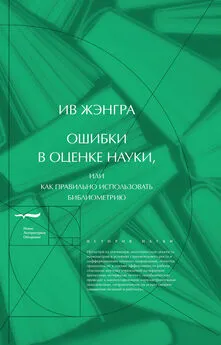


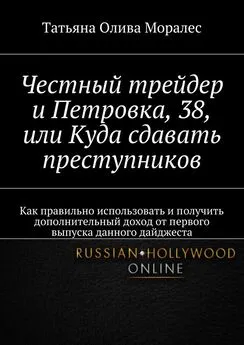
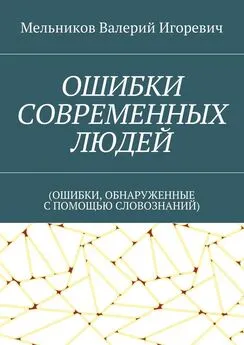
![Ив Жангра - Ошибки в оценке науки, или как правильно использовать библиометрию [калибрятина]](/books/1061749/iv-zhangra-oshibki-v-ocenke-nauki-ili-kak-pravilno.webp)

